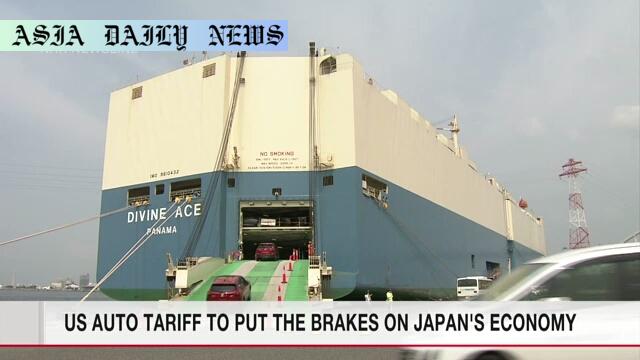Tariff: US President Donald Trump’s tariff measures are set to weigh heavily on the Japanese economy, raising concern over the long-term impact.

Introduction: Brewing Economic Concerns
Trade relations between the United States and Japan have reached a contentious crossroads. The current 25% tariff imposed by the Trump administration on Japanese automobile imports has heightened tension between these two economic giants. For Japan, a country heavily reliant on its automobile export industry, the stakes are high. The additional levy, totaling 27.5% when combined with conventional tariffs, presents a significant challenge to Japanese automakers and the national economy at large.
The Impact on Japan’s GDP
Recent economic analyses highlight the deep blow this could deliver to the Japanese economy. The Nomura Research Institute, a leading think tank, projected that Japan’s annual GDP could decline by 0.47% as a direct result of these automotive tariffs. For perspective, even marginal shifts in GDP can have cascading effects on employment levels, domestic spending power, and foreign investment sentiment. This stark forecast underscores the enormity of the challenge that lies ahead for policymakers in Tokyo.
Pressure on Japanese Automakers
Prominent Japanese carmakers such as Mazda, Subaru, and Nissan are grappling with a new era of uncertainty. In their most recent earnings reports, these companies expressed hesitation in releasing concrete forecasts, citing the unpredictable ramifications of the US tariff measures. Auto manufacturing, a cornerstone of Japan’s export economy, is now facing operational and financial strain as the cost to do business in the lucrative US market escalates.
Trump’s Aggressive Trade Policies
The tariff imposition aligns with President Trump’s broader “America First” agenda, characterized by renegotiated trade agreements and policies aimed at protecting domestic industries. For the Trump administration, applying economic pressure on global partners like Japan is seen as a strategic move to gain leverage in bilateral negotiations. However, the adverse effects on allies raise questions about the long-term viability of such an approach.
Broader Implications for Bilateral Trade
The tariffs have not only disrupted Japan’s export-reliant industries but also created ripples in the broader East Asian regional economy. In the past, Japan and the US have maintained strong, mutually beneficial trade relations. Now, however, these measures introduce an element of unpredictability that could discourage future investments and partnerships between the two nations. Compounding this issue, other nations affected by similar policies may begin to push back against perceived US hegemony in global trade matters.
Conclusion: A Call for Strategic Dialogue
As Japan navigates the challenges posed by these tariffs, collaboration and strategic dialogue will be key. Policymakers must approach this issue with a proactive mindset, bolstering industries most vulnerable to external economic shocks. Diversifying export markets and strengthening domestic demand could offer long-term solutions. Meanwhile, fostering a stable and constructive trade environment will be crucial for sustaining the strong economic ties between Japan and the US.
Commentary
Introduction: Reflecting on Economic Strategies
It is always intriguing to observe how global economies adapt to changing trade policies, especially when major players like the US and Japan are involved. President Trump’s tariffs on Japanese automobile imports represent one such notable shift, prompting broader conversations about fairness in trade agreements and the importance of maintaining strong international partnerships.
Economic Strain on Japan’s Export Model
The effects of the US-imposed tariffs cannot be overstated when considering how deeply reliant Japan is on its automotive industry. Exports of vehicles to the US have been a cornerstone of Japan’s economic model for decades. Now, with the additional 25% levy, Japanese carmakers face significant headwinds. For industries accustomed to operating with razor-thin margins, these extra costs may be difficult to offset without affecting consumers or cutting back production.
Exploring Bilateral Trade Dynamics
The tariffs also reveal an evolving dynamic in the US-Japan trade relationship. Historical partners bound by shared economic and geopolitical interests, these nations now face a test of their ability to maintain a mutually beneficial association. While the US asserts economic dominance through protectionist measures, Japan must weigh its responses carefully to safeguard its market access and broader diplomatic ties.
A Balanced Approach Is Crucial
Ultimately, this situation serves as a reminder of the delicate balance required in international trade policies. Policymakers from both sides must strive for solutions that protect domestic interests without undermining global economic stability. Trade negotiations, rather than unilateral measures, should form the foundation of resolving conflicts. It is my hope that upcoming dialogues between these two nations will prioritize collaboration over confrontation, thereby ensuring a prosperous and sustainable economic partnership moving forward.


